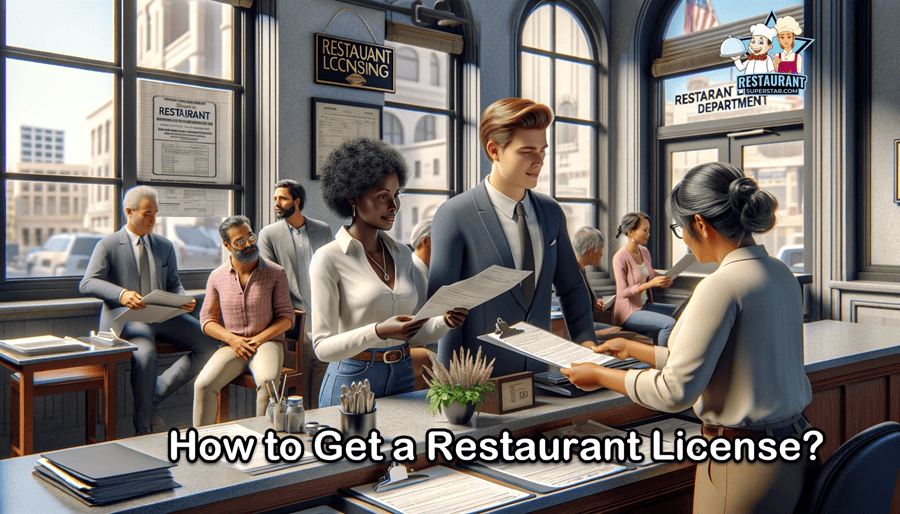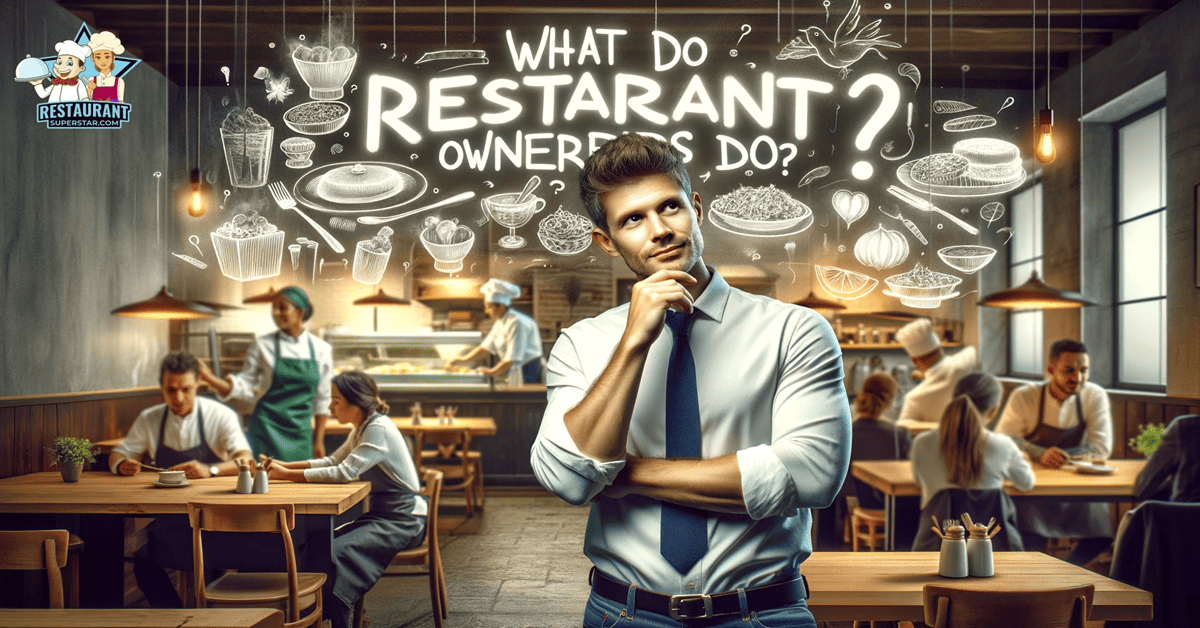How Many Safety Data Sheets Are Needed in a Restaurant
Hey there,
You’re in the right place if you’re wondering how many safety data sheets are needed in a restaurant.
I’m Jeff, a restaurant consultant from sunny Florida who has been in the game for quite some time.
Stick around because, by the end of this article; you will have your answer and gain a deeper understanding of why it’s crucial to have these sheets in the first place.
Ready? Let’s dive in.
How Many Safety Data Sheets Are Needed in a Restaurant?
How Many Safety Data Sheets Are Needed in a Restaurant? A restaurant should have a safety data sheet (SDS) for every hazardous chemical they use – cleaning supplies, sanitizers, and food additives. Depending on their products, the number of SDSs needed may vary. But on average, a typical restaurant will need at least 4-5 SDSs.
The number of safety data sheets (SDSs) a restaurant needs is directly tied to the number and types of chemicals they use.
Generally, you’ll need an SDS for every chemical product in your restaurant – think cleaning supplies, food additives, first aid essentials, sanitizing goods, pest control items, and other maintenance chemicals.
Got it? Great!
But trust me, it gets a lot more intriguing from here. We’re about to delve into everything you need about how many safety data sheets are needed in a restaurant.
If you’ve ever been curious about the nitty-gritty details or why these sheets are essential, you’re in for a treat.
Prepare yourself with your beverage of choice, find utmost comfort, and let’s delve into the depths of the topic at hand.
What on Earth is an SDS?

Alright, let’s start with the basics. An SDS, or Safety Data Sheet, is a cheat sheet for chemicals. Think of it as a profile on a dating app but for chemicals (and with less drama!).
It tells you everything you need to know about a particular substance. From its ingredients and potential hazards to how to store it safely and what to do if there’s an accidental spill. If chemicals had Facebook profiles, their SDS would be it!
Why Restaurants and SDSs are Like Peanut Butter and Jelly
Picture this: It’s a busy Friday night, and things are buzzing in the kitchen. Suddenly, there’s a spill.
Someone knocked over a bottle, but no one’s sure what was in it. Is it just water? Vinegar? Or something more hazardous?
This is where an SDS comes into play. It’ll tell your team exactly what’s in that bottle and how to handle it.
But it’s not just about emergencies. SDSs are crucial for day-to-day operations, too. They help:
- Training: New staff? No problem! SDSs are great training tools to ensure everyone knows how to handle chemicals safely.
- Safe Storage: Some chemicals are like those diva celebrities – they don’t play well with others. SDSs let you know which chemicals need their own space and which can be stored together.
- Protection: Knowing what protective gear to wear (like gloves or goggles) when handling certain chemicals can be a game-changer, and yes, you guessed it, that info’s on the SDS.
Why Safety Data Sheets (SDSs) Matter in Restaurants

First, let’s discuss why these SDSs are such a big deal. Imagine you’re in the kitchen, and you accidentally spill something.
You’re curious whether it’s just harmless soap or a chemical that needs immediate attention.
Enter Safety Data Sheets. These handy sheets are like the user manuals of the chemical world.
They give you the lowdown on everything from safely using and storing a product to what to do if things go south. Essential, right?
Here’s the kicker: they’re not just a “nice-to-have.” Oh no, they’re a “you-better-have-or-else” kind of deal.
Especially if you’re running a restaurant in the U.S., where agencies like the Occupational Safety and Health Administration (OSHA) are clear about their rules.
They mandate that if you’re using hazardous chemicals (and trust me, a lot of everyday stuff in restaurants falls under this category), you must have their SDSs on hand and easily accessible for your team. It’s not just about safety; it’s about staying on the right side of the law.
To summarize, Safety Data Sheets are a restaurant’s best friend. They keep your staff informed, safe, and, importantly, compliant with the law.
And if you’re still with me, we’ll dive into the nitty-gritty of how many of these sheets you need in the upcoming sections.
Stay tuned, and let’s get into the meat and potatoes (pun intended) of how many safety data sheets are needed in a restaurant.
Legal Lowdown: The Must-Knows About SDSs in Restaurants
Alright, my friends, let’s dive deep into rules and regulations. I know it might sound a tad boring, but trust me – as a seasoned restaurant consultant, I can’t stress enough how crucial it is to get this right.
It’s not just about safety; it’s about ensuring your restaurant doesn’t get slapped with hefty fines or, worse, shut down.
The Nitty-Gritty of Safety Data Sheets (SDSs)
First things first, let’s get clear on what an SDS is. Think of an SDS as the ID card for a chemical product.
It gives you the A to Z on that product – what’s in it, potential hazards, how to use it safely, what to do in an emergency, and so on.
These aren’t just fancy papers but essential documents that can make a huge difference in a crisis.
Why the Law Cares (and You Should Too!)
In the United States, ensuring the safety of work environments is of utmost importance, with organizations like the Occupational Safety and Health Administration (OSHA) leading the charge.
They prioritize the well-being and security of employees above all else. And guess what? Restaurants are no exception.
OSHA mandates that employers (including restaurant owners and managers) must have an SDS for each hazardous chemical they use.
And by “use,” I mean everything from the cleaning products you use to wipe down tables to the additives that go into your dishes.
The Real Implications
What happens if you don’t have the required SDSs? Well, it’s not pretty. You could be looking at:
- Hefty fines: We’re talking thousands of dollars here, and repeated violations can add up quickly.
- Legal action: If someone gets injured and you don’t have the proper SDSs, you could be held liable.
- Potential shutdown: In extreme cases, your restaurant could be temporarily or even permanently closed, especially if there are repeated violations.
But here’s the silver lining: Staying compliant isn’t rocket science. It’s about being proactive, staying informed, and ensuring every chemical product in your restaurant has its corresponding SDS.
Legal Implications of SDSs in Restaurants

So, we’ve chatted about the significance of SDSs in our bustling kitchens. But now, let’s dive into the real meaty stuff – the legal side.
It’s like that tangy sauce on your favorite dish; it might seem overwhelming initially, but once you get the hang of it, it all makes sense.
The Legal ABCs of SDSs
Let’s start with a fundamental truth: Safety Data Sheets aren’t just a “good-to-have” but a “must-have.”
And trust me, the law is clear about this. Every chemical product you use in your restaurant, from the soap you wash your hands to the cleaning agents for those stubborn stove stains, must have its own SDS.
Why so strict, you ask?
Well, the idea is simple. It’s all about ensuring the safety of everyone in the restaurant – from the chef whipping up delicious meals to the servers hustling on the floor and, of course, our beloved customers.
OSHA: The Big Player in the Game
Now, if you’re in the U.S., there’s one name you’ve got to remember when it comes to workplace safety: OSHA.
That’s the Occupational Safety and Health Administration for those unaware. These folks mean business.
They’re setting the rules, ensuring workplaces, including restaurants, are safe for everyone.
Here’s the scoop:
- SDS Availability: OSHA mandates that you have an SDS for every hazardous chemical in your restaurant. And it’s not enough to have them stuffed in some drawer; they must be easily accessible. Think of it as having a fire extinguisher; it’s no use if it’s buried under a pile of boxes when you need it.
- Training: OSHA also requires that employees be trained to read and understand SDSs. After all, what’s the point of having these sheets if no one knows how to use them?
- Updates: Chemicals change, and so do their SDSs. OSHA expects you to keep them updated. So, if there’s a new version of a product or if a manufacturer updates an SDS, you’ve got to have the latest version on hand.
While diving into legalities and SDSs might seem daunting, it’s all about being informed and proactive.
Remember, it’s not just about ticking boxes for compliance; it’s about ensuring a safe and thriving environment in your restaurant.
A Deep Dive into Cleaning Supplies: The Chemical Culprits in Restaurants

Now that we’ve got a good grasp on the legalities of SDSs let’s break down the different types of chemicals you’ll typically find in a restaurant.
And what better place to start than the unsung heroes of cleanliness: cleaning supplies!
Cleaning Supplies
We all love a sparkling clean restaurant. But behind every gleaming counter and the spotless floor is a slew of cleaning products working their magic.
And while they’re essential for maintaining hygiene and presentation, they also come with their own set of safety considerations.
Importance of Sdss for Cleaning Supplies
Here’s the deal: cleaning products are often a cocktail of chemicals. Some are harmless, while others… not so much.
And when you’re dealing with substances that can potentially harm your skin, eyes, or even your respiratory system, you want to be in the know.
That’s where SDSs come in. They provide a clear picture of what’s in these products, how to use them safely, and what to do if something goes awry.
Meet the Usual Suspects
Let’s get acquainted with some of the standard cleaning agents you’ll likely find in a restaurant:
- Bleach: While bleach is a potent disinfectant, it requires careful handling to ensure safety. Never mix it with other chemicals, such as ammonia, as this can produce hazardous fumes. Although bleach is reliable for disinfection purposes, mishandling it can pose risks. Remember, never combine bleach with other substances (like ammonia) unless you intentionally seek to generate dangerous fumes.
- Ammonia: This cleaning powerhouse is a force to be reckoned with! While it excels at tackling grease, it does come with a potent scent and the potential to irritate the skin and eyes.
- Dishwasher Detergent: Essential for those sparkling dishes, but some types can be pretty acidic. You want this to be clear from your food!
- Oven Cleaner: A lifesaver for those baked-on messes. But given its strength, you can bet it’s got some strong chemicals that require careful handling.
- Floor Cleaner: Keeps those floors shiny and slip-free. But depending on the type, it could contain chemicals that need special attention.
So, there you have it! A quick tour of the cleaning aisle in the restaurant world. Remember, it’s not about being paranoid; it’s about being informed.
Knowing what’s in these products and how to handle them safely is vital to a smooth-running restaurant.
Sanitizing Products in Restaurants – The Squeaky-Clean Squad
Having covered the cleaning crusaders, let’s move on to another vital category in our restaurants: sanitizing products.
These guardians ensure those pesky germs and bacteria don’t stand a chance in our dining spaces.
Sanitizing Products: The Silent Protectors
Sanitizing products plays a pivotal role in maintaining the cleanliness and safety of our food spaces.
They’re like that vigilant lifeguard at the beach, always on the lookout, ensuring no harm to the swimmers (or diners, in our case).
Why Every Drop of Sanitizer Needs an SDS
You might be thinking, “Jeff, it’s just hand soap. How complicated can it be?” Well, my friend, even the most benign-seeming products can have a cocktail of ingredients.
And in a bustling restaurant, where accidental ingestion or contact can occur, you want to be crystal clear on what’s in those sanitizers.
For example, although hand soap may appear innocuous, certain ingredients can trigger allergic reactions in individuals with sensitivities.
And those antiseptic wipes?
They might contain chemicals that are great for killing germs but not so great if they accidentally end up in someone’s salad.
A Closer Look at Some Sanitizing Stalwarts
- Hand Soap: The frontline warrior in any hygiene battle. While many ingredients are gentle, some soaps can contain allergens or irritants, especially the heavily scented or antibacterial varieties.
- Antiseptic Wipes: These are portable and powerful for quick clean-ups, especially in high-contact areas like door handles or menus. But they often contain strong disinfectants you wouldn’t want near food or sensitive skin.
So, next time you’re refilling that soap dispenser or wiping down a table, give a nod of appreciation to these sanitizing heroes.
And always, always keep their SDSs on hand. Because when it comes to safety, knowledge is power.
Food Additives in the Restaurant Realm – The Flavor Boosters
We’re venturing into the flavorful world of food additives. These unsung heroes elevate our dishes, giving them that extra zing, pop, or fluffiness. But, as with all things in our kitchens, safety comes first!
Explanation of why food additives need SDSs.
We often jump to those vibrant cakes or perfectly risen bread when considering additives.
But these ingredients, while primarily safe, come with their considerations. They might be small in quantity but play a huge role in texture, taste, and appearance.
The Scoop on SDSs for Food Additives
Some of you think, “Come on, Jeff, it’s just a pinch of baking powder. Why the fuss with SDSs?” Well, let’s break it down.
While most food additives are safe for consumption, they might require specific handling or storage.
Plus, their concentrated forms can differ greatly from the final product we consume.
For instance, pure food coloring can stain not just your dessert but also your skin or clothes.
Understanding how to handle spills or accidental exposures is where SDSs step in, offering clarity and guidance.
Meet the Culinary Enhancers
- Food Coloring: These vibrant drops or powders transform our dishes into visual delights. But remember, their concentrated forms can be potent, requiring careful handling.
- Baking Powder: A baker’s best friend! It gives our pastries that delightful rise. While generally safe, certain brands might contain allergens or specific compounds that people might be sensitive to.
- Yeast: Ah, the magic behind our fluffy bread and frothy beers. Yeast is a living organism, and while it’s usually harmless, in large quantities, or if mishandled, it can have specific safety considerations.
Food additives play a crucial role in the grand symphony that is a restaurant dish. They’re the unsung background instruments that, when combined, create culinary magic.
But like everything in our kitchens, knowledge, and safety go hand in hand. And for that, always turn to the trusty SDSs. Need more insights or have burning questions?
First Aid Supplies in the Dining Spotlight

Today, we’re switching gears from the sizzle of the kitchen to the solace of the first aid kit.
That’s right, we’re diving into those trusty supplies that rescue us when there’s a little mishap. Let’s patch things up, shall we?
Importance of having SDSs for first aid products.
In the whirlwind of a busy restaurant, accidents can happen. A small cut while chopping veggies, a minor burn from the stove – these things are part and parcel of the bustling culinary world.
And while we always hope they’re few and far between when they occur, we’re oh-so-grateful for our first aid supplies.
Why an SDS for That Tiny Ointment Tube?
Having an SDS for something as benign as an antiseptic solution might seem overkill. But here’s the thing: even products designed to heal can have specific considerations.
Some folks might be allergic to ingredients in certain ointments. Others might have reactions to particular antiseptics.
It’s all about ensuring that the cure isn’t worse than the ailment; for that, our trusty SDSs come into play.
Spotlight on Some First Aid Staples
- First Aid Ointment: These little tubes contain ingredients to soothe and heal. But they can also contain allergens or elements that might not play well with certain skin types. It’s always good to know what’s inside before you apply.
- Antiseptic Solutions: Essential for cleaning out those pesky wounds, but they’re not all made the same. Some can be too strong for certain skin types or have components requiring specific handling or disposal methods.
First aid supplies might not be the showstoppers in the grand dance of a restaurant day, but they sure are the safety net.
They’re there, waiting in the wings, ready to jump in. And to ensure they do their job without any hiccups, always have their SDSs ready.
Questions? Concerns? Or do you want to chat about the best bandages for kitchen mishaps?
Bugging Out: The Lowdown on Pest Control in Restaurants
Today, we’re diving into a topic that’s a bit less tasty but oh-so-crucial: pest control.
Every restaurant has to deal with it, so let’s tackle this head-on and ensure those unwelcome guests stay out!
Pest Control Products
Running a restaurant isn’t just about dishing out delicious meals; it’s also about ensuring the environment is clean and free from pesky intruders.
Whether it’s those sneaky rats or the ever-annoying flies, pest control products are our line of defense.
Why You Need an SDS for That Bug Spray
I know what you’re thinking, “Jeff, it’s just to shoo away some bugs.
Why the paperwork?”
Well, my friends, while these products are designed to deal with pests, they’re also chock-full of chemicals that can affect us humans.
Pest control products, by design, are meant to deter or eliminate pests. That means they’re potent. And with potency comes the need for safety.
There’s a lot to consider, whether it’s ensuring they’re stored correctly, used in well-ventilated areas, or kept out of reach of children. And where does all this info reside? Yep, the SDS.
Spotlight on Common Pest Busters
- Insecticides: These are your go-to for dealing with insects, from ants to roaches. However, it is important to note that these products frequently consist of chemicals that can pose harm if ingested, inhaled, or come into contact with the skin.
- Rodenticides: Keeping those rats and mice at bay is crucial, but these products can be particularly toxic. Not just to the rodents but to other animals and even humans if not handled with care.
Although pest control is an indispensable aspect of the restaurant industry, it is crucial to approach it with knowledge and caution.
Those SDSs are your guidebook to ensuring you’re keeping pests out without putting your team or customers at risk.
Navigating Miscellaneous Chemicals in Restaurants
Now, we’ve covered the usual suspects in the restaurant world, but what about those less-talked-about chemicals?
Those that don’t fit neatly into our usual categories but are equally essential? Let’s unravel the mystery!
Miscellaneous Chemicals
Every restaurant, just like a well-oiled machine, has its share of tools and chemicals that keep things running smoothly.
While they might not be in the limelight like our cleaning or food additives, these miscellaneous chemicals play vital roles behind the scenes.
The Need for SDSs
So, why the fuss about these lesser-known chemicals? Simply put, the unknown can be risky.
Whether it’s a lubricant for your kitchen machinery or a specific sealant for that fancy countertop, every chemical has its properties, potential hazards, and safety protocols.
And to navigate this safely, you guessed it, we turn to our trusty SDSs.
A Glimpse into the Restaurant’s Chemical Toolbox
- Lubricants: Essential for keeping machinery, like dishwashers or mixers, running smoothly. But they can be slippery, flammable, or toxic if handled incorrectly.
- Sealants & Adhesives: Got a leaky sink or a wobbly countertop? These come to the rescue. But they often contain solvents and other chemicals that need care in usage and storage.
- Descalers: These are crucial for places with hard water to keep appliances free from limescale. But they’re often acidic and require proper handling.
- Specialty Cleaners: Consider those specific stainless steel or copper pot cleaners. They do a fab job but might have unique chemical compositions that need attention.
In a restaurant’s vast culinary orchestra, these miscellaneous chemicals might seem like the lesser-known instruments.
But their role is undeniably pivotal. And to ensure they play their part without any hitches, always refer to their SDSs.
Storing and Accessing SDSs in the Culinary World
We’ve discussed all the different chemicals in a restaurant, but how do we keep track of all those Safety Data Sheets? Let’s dish out the details.
Having readily accessible SDSs for employees is crucial. Vital information on these sheets is useless if buried in a dusty corner or lost in digital files.
It’s like having a secret sauce recipe but forgetting where you kept it! SDSs need to be at arm’s reach for safety and smooth operations.
The Critical Need for Ready Access
Imagine this: a small chemical spill in the kitchen during peak hours. Panic sets in. Is it hazardous? How do we clean it up? Every second counts.
Having that SDS readily available can make all the difference. It’s not just about emergencies, though.
For daily operations, training, or even surprise inspections, easy access to SDSs is a game-changer.
Smart Ways to Store Those Sheets
- Binders: The good old-fashioned way. Organize your SDSs alphabetically or by category in a binder. Place it in a central, easily accessible location, near the manager’s desk or the main kitchen area. Pro tip: Use plastic sleeves to protect the sheets from spills and wear.
- Computers: In our digital age, storing SDSs on a dedicated computer or server in the restaurant is a savvy move. Ensure the system is regularly backed up, and consider having a quick-access icon on the desktop for emergencies.
- Digital Platforms & Apps: Several platforms and apps are designed specifically for SDS management. These allow quick search updates and even send alerts for expired or outdated sheets. Plus, with cloud storage, you can access them from any device, anywhere.
In the bustling world of restaurants, where every moment is a dance of flavors and tasks, having streamlined access to safety info is paramount.
Think of your SDS storage system as the backbone, supporting every move and ensuring everything flows seamlessly.
And remember, if you ever need tips on setting up the perfect SDS storage system or want to chat about the best seafood spots in Florida.
How to Determine the Number of SDSs Required for Your Restaurant

We’ve chatted about SDSs and where to keep ’em, but here’s a burning question: How many do you need for your restaurant? Let’s dive in and get that sorted.
From a Pinch of Salt to a Gallon of Cleaner: Counting Your SDSs
In the diverse world of restaurants, all kitchens are different. You might have a penchant for exotic spices, or your joint is all about organic, chemical-free vibes.
So, naturally, the number of SDSs you’ll need can vary. But one thing’s sure: Every chemical deserves its spotlight on the SDS stage.
Reaching Out: The First Step to Knowledge
Before you start counting and cataloging, here’s a pro tip: Talk to the experts. Your chemical suppliers and product manufacturers are treasure troves of information. They can provide the latest SDSs and even help you understand which products require them.
- Consult with suppliers: These folks are your direct link to buying your products. They’ll have the most up-to-date SDSs and can guide you on quantities, storage, and more.
- Reach Out to Manufacturers: If you’re ever in doubt or need more detailed info, going straight to the manufacturer’s source can be super beneficial. They’ll have the full scoop on their products, from ingredients to safety protocols.
Every Chemical’s Right: An SDS of Its Own
This might sound like a mantra, but it’s worth repeating: Every chemical product in your restaurant needs an SDS.
Why?
Because safety isn’t a guessing game.
Whether it’s a common cleaner or a niche food additive, it needs an SDS if it’s got chemicals.
This ensures that you, your team, and your patrons are always protected and informed.
So, next time you’re stocking up on supplies or introducing a new dish with a fancy ingredient, take a moment to check on its SDS status.
Remember, in restaurants, knowledge isn’t just power; it’s safety.
Wrapping It Up: Safety, Knowledge, and Culinary Excellence
Rounding off our deep dive into the world of Safety Data Sheets in our beloved restaurants.
As we bid farewell to this topic, let’s take a moment to revisit the key takeaways and ensure our kitchens are not just temples of taste but also havens of safety.
A Journey from the Pan to the Paper
Our culinary adventures are a blend of flavors, aromas, and, yes, chemicals.
These silent players, whether they’re enhancing our dishes or keeping our spaces spic and span, come with their own set of rules.
And the golden ticket to understanding them? The SDS.
Recapping the SDS Symphony
- Purpose & Need: At the heart of every SDS is safety. These sheets shed light on the what, why, and how of every chemical in our space, ensuring we’re informed and ready for any situation.
- Accessibility: An SDS is only as good as its accessibility. Whether it’s a binder by the counter, a digital folder, or a cloud-based app, having these sheets at our fingertips is crucial.
- Count & Update: The world of chemicals is ever-evolving. Regularly consulting with suppliers, counting our SDSs, and updating them ensures we’re always in the know.
A Call to Culinary Champions
To all the restaurant owners, managers, chefs, and staff reading this: our journey with food is one of passion, creativity, and responsibility.
Ensuring every chemical has its corresponding SDS isn’t just about compliance; it’s about care. Care for ourselves, our teams, and our patrons.
So, as you whip up that next signature dish or mix that vibrant cocktail, take a moment to reflect on the silent ingredients and their stories. And if ever in doubt, turn to those SDSs.
Let’s make our kitchens a blend of flavors and safety.
Jeff Smith is a Restaurant Consultant with over 20 years of hospitality experience ranging from server to owner and general manager. He focuses on Restaurant POS technology as well as restaurant marketing. Check out our world-famous restaurant resources page for a comprehensive offering of hand-picked resources and tools to help your business. You can also check out some of our other restaurant business articles.



